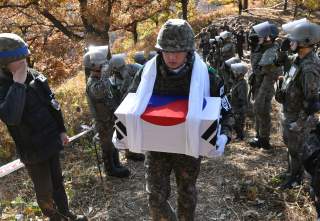The Hanoi Summit – We Asked Tim Shorrock What Happens Next in U.S.-North Korea Relations
"To move forward from this impasse, a change in position is necessary for both sides."
Editor’s Note: Looking for more opinions on where we go after the Hanoi summit? Check out all 80 expert takes on where U.S-North Korea relations go next here.
Where the U.S.-DPRK talks go after the failure in Hanoi to reach even an interim agreement, such as opening liaison offices, depends very much on how President Donald Trump can control his national security team and ameliorate the differences between John Bolton and Stephen Beigun.
From everything I’ve read about the summit, Kim Jong-un was expecting that Beigun’s more realistic step-by-step approach (outlined in his recent speech in Stanford) would prevail. That would have allowed both sides to make progress in their shared commitments, as expressed in Singapore last June, to creating a new U.S.-DPRK relationship and building a long-term peace regime on the Korean Peninsula—and signal that North could move towards denuclearization.
Instead, what the North heard—after it offered to shut down its Yongbyon plutonium and uranium enrichment complex in return for a lifting of the UN sanctions imposed since 2016—was Trump’s counter-offer that only a complete elimination of the North’s nuclear and missile program, as well as its chemical and biological stockpile, would lead the United States to end sanctions.
That looked like the United States was moving the goal posts and had the unmistakable fingerprints of Bolton written all over it. But it is now official U.S. policy, as Beigun himself stated on March 12 in Washington at his first public speech since Stanford.
Now, in apparent response, the DPRK is making visible improvements to the Sohae Satellite Launch facility that it once offered to close as well as the missile factory at Sanumdong. These changes, as the DPRK well knows, are being monitored closely by the United States and South Korean intelligence. But, as Beigun suggested in his March 12 talk, they are also being exaggerated by U.S. think tanks and what he called the “commentariat,” which are predicting an imminent missile test.
Instead, as some South Korean analysts suggest, the renewed construction could be a deliberate attempt to confuse both the Trump administration and the very influential expert class, or a clear signal of what the DPRK intends if the denuclearization talks completely collapse. To move forward from this impasse, a change in position is necessary for both sides. There has to be a middle ground between the Boltonesque “all or nothing” approach and the “only Yongbyon for now” tack of the North Koreans.
I believe they will find that ground, perhaps through a renewed diplomatic offensive by South Korean President Moon Jae-in, or in a new round of talks led by Beigun and his interlocutors in the DPRK Foreign Ministry. Both sides have too much at stake and far too much to lose to return to confrontation and the tensions of 2017.
Tim Shorrock is a regular contributor to The National Interest and writes regularly on Korea, Japan, and U.S. intelligence for The Nation. Follow him on Twitter at @TimothyS.
Image: Reuters

